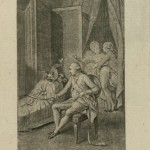Europe
Europe is a name given by the Greeks to a region or continent that stretches from the Ural in the east to Ireland (or Iceland) in the west and from Scandinavia in the north to Italy in the south.
The continent’s societies, cultures, and languages have always been highly diverse. Greeks and Romans were the first civilizations to introduce an urban, written, and so-called high culture.
Europe was a world of hunting and peasant communities before the arrival of the Romans and Greeks.
After the fall of the (west) Roman Empire (476) Europe would never be the same again.
The ‘Greek’ Byzantine Empire kept the idea of a united Europe alive and called itself the continuation of the Roman Empire.
Latin Europe saw political fragmentation, a sharp decline of the urban landscape and a loss of Roman (written) culture. An elite of aristocrats (and bishops) ruled over the population of peasants. They maintained a network of loyalties and alliances that made up the political world.
However, the new class of clerics, monks, bishops and popes was a novelty. They worked and lived in a web of institutions (Benedictine abbeys, monasteries, churches, bishoprics). The first bishop in Rome was the religious successor of the secular Roman emperors.
The cultural inheritance of Latin Europe was a mixture of German/Frankish and Roman culture, with Latin as the learned and religious language and a (rudimentary) surviving network of roads, cities and trading networks.
Latin Europe of the early Middle Ages (c. 400-800) was marked by less mobility, although long-distance trading networks never disappeared completely. For example, the Frisian and Scandinavian traders in the north and their Swiss, German, French and Mediterranean partners in the south.
The Carolingian Empire (ninth century) and the Holy Roman Empire (from the tenth and eleventh centuries) paved the way for a vital European society, including the conquered territories in the east and the Christianization of Scandinavian peoples.
The scale of production and distribution changed, the population grew considerably, urbanization and commercialization restructured economic and social life, and banking and financial devices were created (and financial crises as well).
The way of thinking changed by the discovery of ancient manuscripts, the foundation of universities, the role of the Papacy, the development of the legal system (advocates, judges, jurisprudence and law), representative bodies (council of states, parliaments), bureaucracies, international business, the financial system and trading networks.
There was a shared cultural heritage. The (Romanesque) arts, the Church, architecture and the use of Latin are just a few examples of this Europeanization of Europe.
Switzerland
Switzerland did not differ from other European regions in Latin Europe. Its present-day territory was in the heartland of Latin Europe.
There were many independent political entities in Switzerland. Abbeys, bishoprics, (imperial) cities, communes and aristocratic dynasties. The territories were part of the Holy Roman Empire after the eleventh century.
The communes (Orte and Landsgemeinde) and the cities became the prominent political players in a process that started in the thirteenth century. The aristocracy, German/Habsburg emperors, and kings disappeared two centuries after 1291 and with the Peace of Basel in 1499.
The loose alliances of Orte and cantons (the common name in the sxiteenth century) finally became the Eidgenossenschaft of thirteen sovereign cantons in 1513.
Switzerland became a federal state with one constitution, one currency, one foreign policy, and one army in 1848.
It is a state with four languages, various cultures, religions, traditions and twenty-six democratic sovereign republics c.q. cantons and their constitutions.
One could say that Switzerland was Europeanized after the departure of the Romans in the fifth century, after four centuries of romanisation. This political entity also shows the limits of a politically united European continent.
(Source: R. Bartlett, The Making of Europe. Conquest, Colonization and Cultural Change 950-1350 (London 1993).



